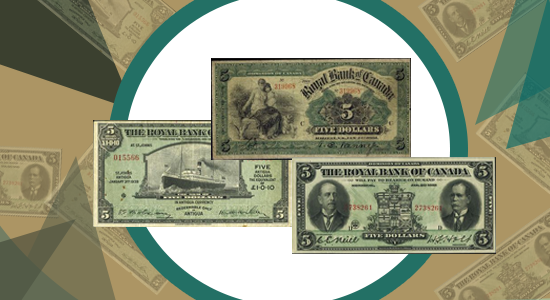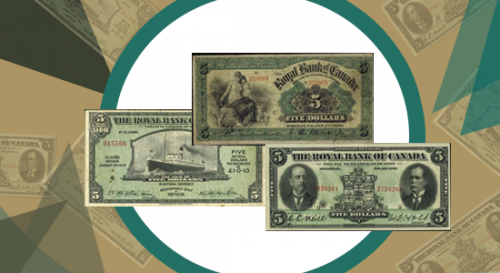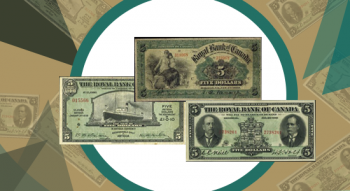Last updated on May 2nd, 2024 at 03:35 pm
Last Updated on May 2, 2024 Posted by Colonial Acres Coins
Canadian paper money, including the interesting five-dollar bill, has been regulated by the Bank of Canada ever since 1934. Since then, the banknotes of Canada have undergone many changes including the language and their design. For example, the banknotes were unilingual at first and usually had the picture of either the member of the royal family or the Prime Minister. The five-dollar bill has been particularly popular among collectors who aim at gathering them all. Read on to find out how it has evolved throughout the years and why you should consider one for your collection:
- The First Three Series (1935, 1937, 1954)
- Scenes Of Canada And Birds Of Canada (1972, 1979, 1986)
- Canadian Journey Series And Frontier Series (2001-2013)
The First Three Series (1935, 1937, 1954)
With the first 1935 Series, there was a banknote in French for Quebec and one in English for the rest of Canada. This one particularly is a jewel to have in your collection since it is the first ever banknote to be issued by the Bank of Canada. It features an image of Edward VIII who was King of the United Kingdom and the Dominions of the British Empire, and Emperor of India. The second 1937 Series is known as the first bilingual series with English being always on the left and French on the right side. This one, with the portrait of George VI, is the revolutionary series since it is bordered by the texts in two languages. Collectors find this series especially valuable since it marks an important milestone in Canadian history. Finally, the 1954 Series is quite different from the previous series and follows the accession of Elizabeth II to the throne. It is known as the Devil Face Series since the public noticed the devil’s face in the Queen’s hair. Collectors are pretty eager to find this issue of a five-dollar bill since it was later re-engraved without the devil’s face.
Scenes of Canada and Birds of Canada (1972, 1979, 1986)
The fourth series, the Scenes Of Canada, had colourful, wavy patterns and was made forgery-resistant. The five-dollar bill carries the portrait of Wilfrid Laurier on the obverse and the reverse depicts a salmon seiner in the Johnstone Strait. Precisely for its better quality is it very special and collector’s strive to find this one to add to their collection. This fourth series was replaced by the fifth, the Birds Of Canada with the same portrait on the front as well as the belted kingfisher, a bird indigenous to Canada. All of these are masterfully designed and special attention was paid to the details, especially with the picture of the bird which blends in the blue colour of the bill.
Canadian Journey Series and Frontier Series (2001-2013)
The Canadian Journey Series discontinued the use of planchettes and introduced new security features which were the focus of this series. The theme on the five-dollar bill was “children at play”. The portrait was still that of Wilfrid Laurier and the building is the West Block of Parliament Hill. This series includes a quotation from The Hockey Sweater which is why it is particularly interesting among collectors. Lastly, the currently used banknotes in Canada, the Frontier Series, have been revealed in 2011. With increased durability and more safety features, Canadians surely appreciate what the current banknotes feel and look like.
Expand Your Paper Money Collection with Colonial Acres
If you are fond of collecting Canadian paper money, contact Colonial Acres for all of your numismatic needs. As a result of being in the business for more than 20 years, Colonial Acres Coins has become a household name for all things numismatics-related. Whether you’re trying to source rare and hard-to-find coin or paper money specimens or you need information on a mysterious coin piece no one else knows enough about, you know where to go. Get a hold of Colonial Acres’ experienced professionals and expand your collection starting today.




